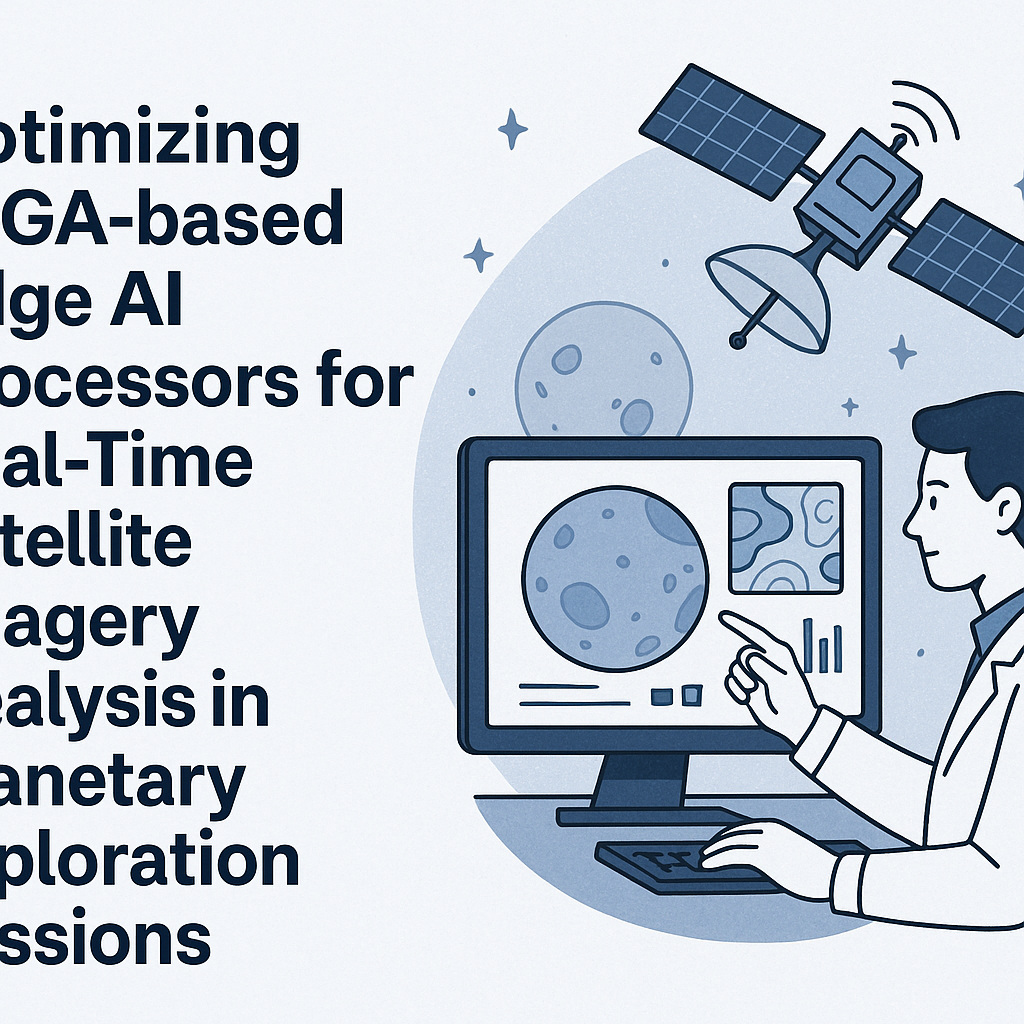Introduction
In recent years, the need for real-time data processing has surged, particularly in the field of planetary exploration. With the advent of advanced satellite imagery, the ability to analyze this data promptly is crucial for making informed decisions during missions. FPGA-based edge AI processors have emerged as a powerful solution to meet these demands, optimizing performance and efficiency in processing satellite imagery. This article delves into the optimization of these processors for real-time analysis in planetary exploration missions.
Understanding FPGA-based Edge AI Processors
Field-Programmable Gate Arrays (FPGAs) are integrated circuits that can be programmed after manufacturing. Their inherent flexibility and parallel processing capabilities make them ideal for handling the demanding computational tasks associated with satellite imagery analysis.
- Flexibility: FPGAs can be reconfigured to implement various algorithms, making them adaptable to evolving mission requirements.
- Parallel Processing: FPGAs can execute multiple operations simultaneously, significantly speeding up data processing times.
- Energy Efficiency: These processors consume less power compared to traditional CPUs and GPUs, making them suitable for edge applications where power availability may be limited.
Challenges in Real-Time Satellite Imagery Analysis
Despite their advantages, several challenges must be addressed to optimize FPGAs for real-time satellite imagery analysis:
- Data Volume: The sheer volume of data generated by satellites can overwhelm traditional processing systems.
- Algorithm Complexity: Advanced algorithms needed for image processing can be computationally intensive.
- Latency Requirements: Real-time analysis necessitates minimal latency, which can be difficult to achieve with complex processing tasks.
Optimization Techniques for FPGA-based Processors
To overcome these challenges, several optimization techniques can be employed:
1. Hardware Acceleration
By implementing hardware acceleration, specific tasks can be offloaded to dedicated processing units within the FPGA. This can significantly reduce processing time and enhance overall system performance.
2. Data Compression
Applying data compression techniques can help manage the large volumes of satellite imagery data. Compressing data before transmission and decompressing it on the FPGA can reduce bandwidth requirements and improve processing speeds.
3. Resource Utilization
Efficiently utilizing the available resources on an FPGA is crucial. Techniques such as pipelining and parallelism can be leveraged to ensure that all processing units are active and working simultaneously, maximizing throughput.
4. Algorithm Optimization
Optimizing algorithms specifically for FPGA architecture can lead to significant performance improvements. This includes simplifying algorithms, using fixed-point arithmetic instead of floating-point, and leveraging the parallel processing capabilities of FPGAs.
Applications in Planetary Exploration Missions
FPGA-based edge AI processors can be pivotal in various applications within planetary exploration missions:
- Terrain Mapping: Real-time analysis of satellite imagery can assist in creating detailed terrain maps, crucial for landing site selection and mission planning.
- Change Detection: Identifying changes in landscapes over time can provide insights into geological processes and potential signs of life.
- Object Detection and Classification: FPGAs can be employed to detect and classify specific objects or features in imagery, aiding in scientific research and exploration objectives.
Case Study: Mars Exploration
One notable example of FPGA optimization in action is during the Mars exploration missions. The Mars Reconnaissance Orbiter (MRO) utilizes advanced imaging systems that generate vast amounts of data. By integrating FPGA-based processors, the MRO can process imagery in real-time, allowing for immediate analysis and decision-making regarding scientific investigations.
Future Directions
As technology continues to advance, the potential for FPGA-based edge AI processors in satellite imagery analysis is vast. Future developments may include:
- Increased Integration: Combining FPGAs with other processing units, such as GPUs and CPUs, to create hybrid systems that leverage the strengths of each architecture.
- AI and Machine Learning: Integrating AI and machine learning algorithms directly into FPGA systems can enhance the capability for autonomous analysis and decision-making.
- Enhanced Communication: Advancements in communication technologies will ensure faster data transfer rates, improving the efficiency of real-time analysis.
Conclusion
Optimizing FPGA-based edge AI processors for real-time satellite imagery analysis is crucial for the success of planetary exploration missions. By addressing challenges related to data volume, algorithm complexity, and latency requirements, and by employing effective optimization techniques, these processors can significantly enhance the capabilities of satellite missions. As technology evolves, the integration of advanced algorithms and hybrid processing systems will further expand the potential applications of FPGAs, paving the way for groundbreaking discoveries in planetary exploration.



